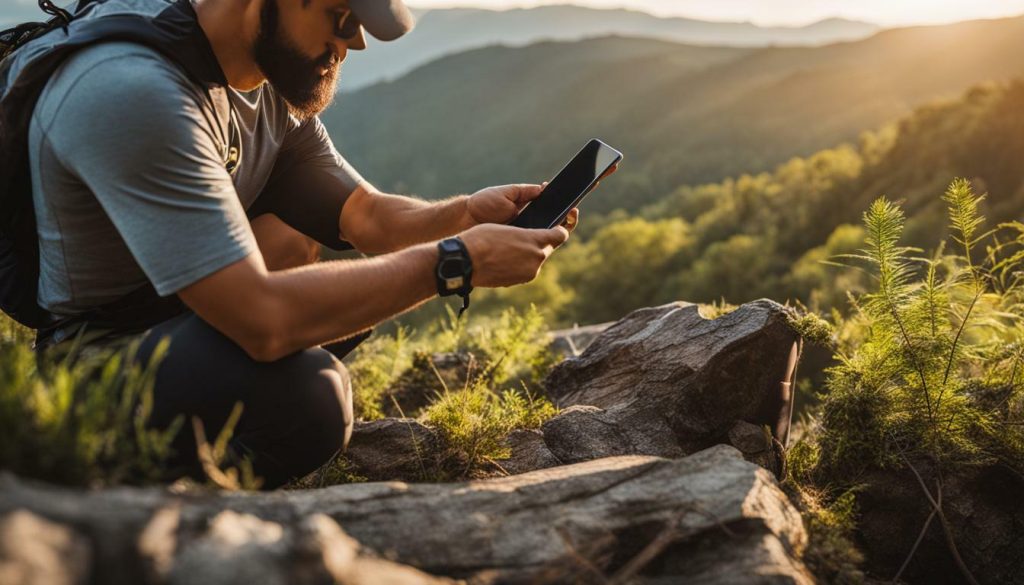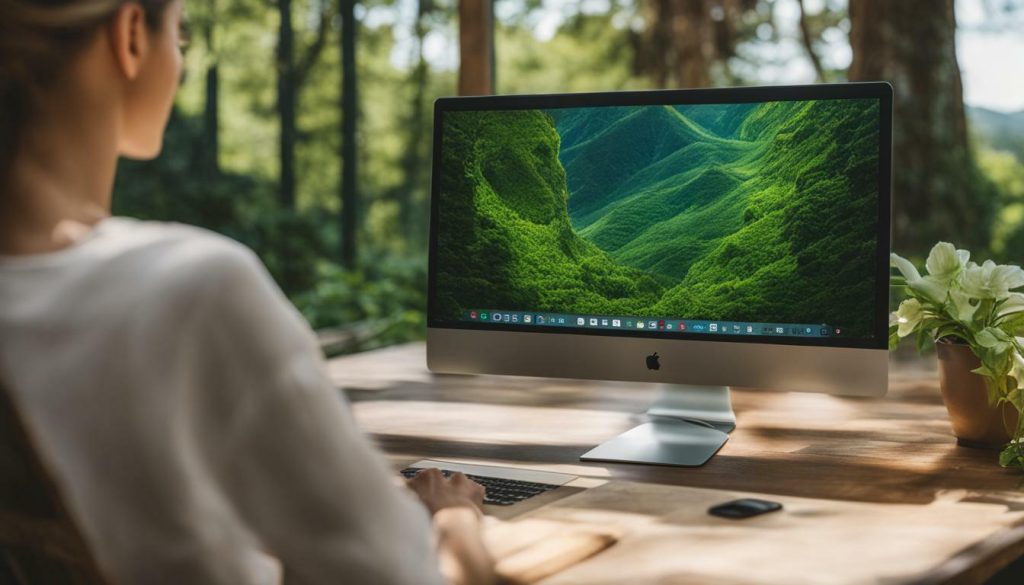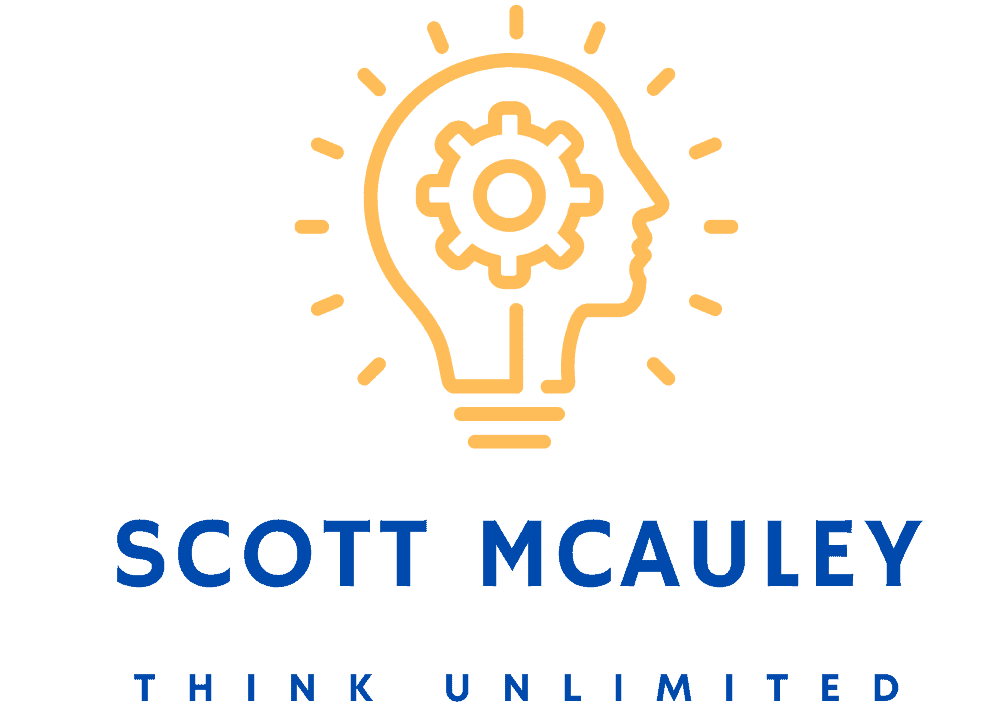Digital detox challenges may make a journey to unplug and recharge daunting, but the benefits in today’s digital age are increasingly essential for productivity and relationships.
By disconnecting from screens and taking a break from the constant distractions of the digital world, you can experience improved productivity, concentration, and overall well-being.
To ensure a successful digital detox, it’s essential to establish healthy morning and bedtime routines that avoid screens and promote good sleep hygiene. Engaging in physical activities and using your phone with purpose can also help reduce digital distractions and find a balance with technology.
- Unplugging and recharging through digital detoxing brings numerous benefits.
- Setting limits on technology use and creating a schedule prioritizes health and happiness.
- Understanding dopamine’s role in technology addiction aids in overcoming detox challenges.
- Crafting an effective detox plan involves setting boundaries and breaking down the challenge.
- Taking breaks from screens, engaging in nature, and practicing mindfulness enhance the detox experience.
Understanding the Negative Effects of Digital Addiction
Digital addiction can harm various aspects of life, including decreased productivity, strained relationships, and compromised mental well-being. In today’s hyperconnected world, getting caught up in the constant stream of notifications, social media updates, and online distractions is easy. The allure of the digital realm can be overwhelming, leading to addictive behaviors and a lack of balance in our lives.
Excessive technology use has been linked to reduced productivity. Constantly checking emails, scrolling through social media feeds, or engaging in online gaming can consume valuable time spent on more important tasks. This can result in missed deadlines, unfinished work, and a general sense of being overwhelmed by our digital obligations.
Moreover, digital addiction can strain our relationships. Spending excessive time on our devices can lead to neglecting personal connections and meaningful interactions with loved ones. People may feel ignored or unimportant when they constantly see their loved ones engrossed in screens. This can lead to feelings of resentment, isolation, and a lack of emotional connection.
| Long-Term Effects of Digital Detox | How to Overcome Digital Addiction | Smartphone Addiction Detox |
|---|---|---|
| Improved productivity | Set limits on technology use | Create a detox plan |
| Enhanced concentration | Get enough quality sleep | Set boundaries |
| Overall well-being | Engage in physical activities | Break down the challenge |
It is crucial to recognize the long-term effects of digital addiction and take steps to overcome it. By setting limits on technology use, getting enough quality sleep, and engaging in physical activities, we can regain control over our lives and strike a healthier balance.
It’s important to understand the role of dopamine in technology addiction and use it to our advantage. Dopamine is a neurotransmitter associated with pleasure and reward, and it plays a significant role in addictive behaviors. By recognizing the addictive nature of our devices and finding alternative methods to stimulate dopamine release, we can break free from the cycle of digital addiction.
In conclusion, understanding the negative effects of digital addiction is the first step towards a successful digital detox. By recognizing the impacts on productivity, relationships, and mental well-being, we can take proactive measures to regain control over our digital lives.
Setting limits, understanding dopamine, and crafting an effective detox plan are essential for reclaiming our time, focus, and overall well-being. By prioritizing our health and happiness, we can create a schedule that allows us to thrive both online and offline.
Solving Digital Detox Challenges
The success of a digital detox largely depends on setting clear limits and boundaries for technology use. In today’s digital world, it’s easy to get swept up in the constant stream of notifications, messages, and information overload. However, by establishing guidelines for yourself, you can regain control over your screen time and experience the benefits of unplugging.
One technique to manage screen time is to designate specific hours of the day as “tech-free zones.” This means setting aside dedicated periods where you disconnect from your devices completely.
For example, you could establish a rule of no technology during meal times or commit to a digital-free hour before bed. These moments of disconnection allow you to be fully present in the real world and foster deeper connections with others.
Another effective strategy is to implement the “80/20 rule” or the “Pomodoro Technique” to manage your time between digital and offline activities. The 80/20 rule suggests that you spend 80% of your waking hours engaged in non-screen activities, such as exercise, reading, or pursuing hobbies. The remaining 20% can be allocated to using technology for work, communication, or entertainment.
Similarly, the Pomodoro Technique involves breaking your work or study sessions into focused blocks of time, typically 25 minutes, followed by short breaks. This method encourages productivity while also allowing for regular tech breaks.
Moreover, creating a schedule that prioritizes your health and happiness over excessive screen time can greatly support your digital detox efforts. Dedicate time for physical activities, such as exercise or outdoor walks, to counterbalance the sedentary nature of digital consumption.
Engage in activities that bring you joy and help you reconnect with yourself and your environment. Whether it’s practicing mindfulness or pursuing a creative outlet, these intentional moments away from screens can bring clarity and peace of mind.
| Benefits of Setting Limits: | Techniques for Managing Screen Time: |
|---|---|
| Improved productivity and concentration | Designate tech-free zones |
| Better sleep quality and overall well-being | Implement the 80/20 rule or Pomodoro Technique |
| Enhanced relationships and deeper connections | Create a schedule prioritizing health and happiness |
By setting limits on technology use, you empower yourself to take charge of your digital habits and regain balance in your life. It’s important to remember that digital detoxing is not about completely eliminating technology but rather finding a healthy and mindful relationship with it. So, establish clear boundaries, prioritize self-care, and embrace the benefits of unplugging in order to experience a successful digital detox.

Understanding Dopamine and Using It to Your Advantage
Understanding the role of dopamine in technology addiction is crucial to effectively navigate the challenges of a digital detox. Dopamine is a neurotransmitter that plays a key role in the brain’s reward system, reinforcing behaviors that provide pleasure or satisfaction. It is released when we engage with technology, such as scrolling through social media or receiving notifications on our smartphones. This release of dopamine creates a sense of pleasure and drives us to seek more of it, leading to addictive behaviors.
However, when we understand the power of dopamine, we can harness it to our advantage during a digital detox. By recognizing that the urge to constantly check our phones or engage with screens is driven by the reward-seeking nature of dopamine, we can develop strategies to overcome this addiction.
One approach is to replace the instant gratification of technology with healthier alternatives that also release dopamine, such as engaging in physical activities or pursuing hobbies that bring joy and fulfillment. This way, we can still experience the pleasure of dopamine release while reducing our reliance on technology.
Another way to leverage dopamine during a digital detox is by setting achievable goals and tracking our progress. Dopamine is released not only when we achieve a reward but also when we anticipate it. By breaking down the detox into smaller, manageable chunks, such as gradually decreasing screen time each day or week, we can experience the satisfaction of achieving these milestones and feel motivated to continue on our detox journey.
Table 1 : Dopamine-Boosting Alternatives
| Activity | Description |
|---|---|
| Exercising | Engaging in physical activities like running, swimming, or dancing releases endorphins and dopamine, boosting mood and overall well-being. |
| Practicing a hobby | Rediscovering or exploring hobbies such as painting, playing a musical instrument, or gardening can provide a sense of accomplishment and pleasure. |
| Connecting with loved ones | Spending quality time with family and friends, engaging in meaningful conversations or participating in activities together, can foster positive emotions and release dopamine. |
In conclusion, understanding the role of dopamine in technology addiction allows us to navigate the challenges of a digital detox more effectively. By replacing the instant gratification of technology with dopamine-boosting alternatives and setting achievable goals, we can overcome addictive behaviors and find fulfillment in healthier activities.
Remember, it’s not about completely eliminating technology from our lives, but rather finding a healthy balance that prioritizes our mental health and well-being.

A well-crafted digital detox plan is the roadmap to success in overcoming the challenges of excessive screen time. In today’s digital world, it’s essential to take intentional breaks from technology to prioritize our mental and physical well-being. Here are some strategies and tips to help you create an effective digital detox plan:
- Set clear boundaries: Define specific times or days when you will completely disconnect from screens. This could be a few hours each day or an entire weekend devoted to offline activities. Communicate your boundaries with those around you to ensure uninterrupted detoxing.
- Break it down: Tackling a digital detox can be overwhelming, so break it down into smaller, manageable chunks. Start with a shorter detox period, like a day or two, and gradually increase the duration. This approach allows you to build momentum and develop the skills needed to sustain a long-term detox.
- Find alternative activities: Fill the void left by technology with meaningful offline activities. Engage in hobbies, exercise, read books, or spend quality time with loved ones. Explore nature, go for a walk, or practice mindfulness to fully immerse yourself in the present moment.
Remember, a successful digital detox plan is not about completely eliminating technology from your life. It’s about finding a healthy balance and using technology with purpose.
Embrace the benefits of digital detoxing, such as improved productivity, enhanced concentration, and better overall well-being. By crafting an effective plan, you can regain control over your screen time and experience the many rewards of unplugging.

| Improved Productivity | Enhanced Concentration | Reduced Stress |
|---|---|---|
| You can improve your ability to concentrate and engage in deep work by minimizing distractions. | By minimizing distractions, you can improve your ability to concentrate and engage in deep work. | Constant exposure to digital stimuli can lead to heightened stress levels. Digital detoxing provides an opportunity to relax and recharge. |
| Improved Sleep Quality | Enhanced Relationships | Increased Self-Awareness |
| Reducing screen time before bed can improve your sleep quality and promote better overall health. | Disconnecting from screens allows you to fully engage with loved ones, fostering deeper and more meaningful connections. | Digital detoxing provides an opportunity for self-reflection and self-discovery, helping you gain clarity and enhance your sense of well-being. |
Reconnecting with Yourself and Your Environment
Digital detoxing allows for a renewed connection with oneself and the surrounding environment, fostering personal growth and meaningful relationships.
When we constantly rely on screens and technology, we can easily become disconnected from our own thoughts, emotions, and surroundings. Taking a break from digital devices provides an opportunity to reconnect with ourselves on a deeper level. It allows us to reflect, introspect, and gain clarity about our priorities, values, and goals in life.
Moreover, spending time away from screens opens up space for us to engage more fully with the world around us. Instead of being absorbed in virtual experiences, we can fully immerse ourselves in the present moment and appreciate the beauty of the natural environment.
Whether it’s taking a walk in the park, sitting by the ocean, or simply observing the changing seasons, reconnecting with nature can bring us a sense of peace, grounding, and inspiration.
By breaking free from the digital world, we create opportunities to foster deeper connections with others as well. When we prioritize face-to-face interactions, we can give our full attention to the people in our lives and cultivate more meaningful relationships. Engaging in heartfelt conversations, sharing experiences, and creating memories together enrich our lives in ways that virtual interactions simply cannot replicate.

| Effects of Digital Addiction: | Finding Balance with Technology: |
|---|---|
| Reduced productivity | Set limits on technology use |
| Diminished relationships | Disconnect from screens |
| Increased stress and anxiety | Engage in physical activities |
Digital detoxing is not about completely abandoning technology but rather finding a mindful balance in our use of it. By actively reconnecting with ourselves and our environment, we can reap the benefits of a more balanced and fulfilling life.
Mindfulness and Mindful Consumption of Digital Information
Mindfulness plays a crucial role in a successful digital detox by helping individuals develop a conscious and intentional approach towards their technology use. In today’s fast-paced digital world, it’s easy to get swept up in the constant stream of information and distractions. Being mindful allows us to pause and reflect on our digital consumption, making more intentional choices about how we engage with technology.
One effective way to practice mindfulness during a digital detox is to consume digital information mindfully. This means being aware of the purpose and impact of the information we consume, rather than mindlessly scrolling through endless feeds. By making a conscious effort to engage in meaningful content and filtering out unnecessary noise, we can enhance our digital well-being and minimize the negative effects of constant information overload.
“Consuming digital information mindfully means being intentional with our attention and focusing on quality over quantity.”
There are several practical tips to help us consume digital information mindfully. First, it’s important to mute notifications and set designated times for checking devices. This reduces distractions and allows for more focused and uninterrupted blocks of time. Second, engaging in offline activities that enrich the mind, such as reading books or engaging in creative hobbies, can provide a refreshing break from the digital world.
By practicing mindfulness and mindful consumption of digital information, we can regain control over our technology use and create a healthier relationship with screens. It allows us to prioritize what truly matters to us and find a balance between the benefits of technology and the need for mental well-being.
Mindful Consumption of Digital Information Tips:
- Mute notifications and set designated times for checking devices
- Engage in offline activities that enrich the mind
- Be aware of the purpose and impact of the information you consume
- Focus on quality over quantity

| Benefits of Mindful Consumption | Challenges of Mindful Consumption |
|---|---|
| Enhanced focus and concentration | Resistance to the fear of missing out |
| Reduced stress and overwhelm | Breaking the habit of mindless scrolling |
| Informed decision-making | Building healthier digital habits |
By adopting mindful consumption practices, we can harness the power of technology without letting it control our lives. Take the time to pause, reflect, and make conscious choices about how you engage with digital information. This will not only improve your digital detox experience but also enhance your overall well-being.
Establishing Healthy Habits: Morning and Bedtime Routines
Starting and ending the day with purposeful habits can greatly enhance the effectiveness of a digital detox. By establishing healthy morning and bedtime routines, you can set the tone for a technology-free day and ensure a restful night’s sleep.

1. Rise and Shine Without Screens
Avoid the common temptation of reaching for your phone first thing in the morning. Instead, use those precious early moments to connect with yourself and set your intentions for the day. Engage in activities that promote mindfulness, such as meditation, journaling, or gentle stretching exercises. Give your mind the opportunity to wake up fully before exposing it to the distractions of the digital world.
2. Create a Device-Free Zone
Designate your bedroom as a sanctuary for sleep and relaxation. Keep all electronic devices out of reach, preferably in a different room. This will help eliminate the temptation to mindlessly scroll through social media or reply to emails right before bed. Instead, create a calming bedtime routine that promotes restful sleep, such as reading a book, practicing gratitude, or enjoying a warm bath.
3. Disconnect Gradually
Transitioning from a day filled with digital stimulation to a technology-free evening can be challenging. Instead of abruptly cutting off all screen time, try gradually disconnecting as bedtime approaches. Start by setting a specific time each evening when you will put away your devices. Use this time to wind down, engage in offline activities, and prepare your mind and body for a peaceful night’s sleep.
By incorporating these healthy habits into your morning and bedtime routines, you can create a digital detox environment that supports your overall well-being. Remember, a successful detox is not about complete isolation from technology, but rather finding a balance that allows you to connect with yourself and the world around you in a more meaningful way.
Prioritizing Health and Happiness: Creating a Schedule
A well-structured daily schedule can help individuals strike a balance between technology use and their overall well-being. By prioritizing health and happiness in our routines, we can reduce digital distractions and find harmony in our relationship with technology. Here are some practical tips to help you create a schedule that supports your digital detox and enhances your quality of life.
1. Set Clear Boundaries
To reduce digital distractions, establish specific times for using technology and stick to them. For example, designate certain hours in the day for checking emails or browsing social media. Outside of these designated times, keep your devices out of reach to minimize temptation and create space for meaningful offline activities.
2. Engage in Physical Activities
Regular exercise not only boosts your physical health but also helps you disconnect from screens and connect with your body. Incorporate a variety of physical activities into your schedule, such as yoga, jogging, or dancing. Physical movement enhances your mood, reduces stress, and improves overall well-being.
3. Foster Offline Connections
In a digital world, it’s essential to prioritize face-to-face interactions. Schedule time to meet friends, have meaningful conversations, or engage in activities together. Building offline connections strengthens relationships and provides a sense of belonging that goes beyond virtual interactions.
| Benefits of Creating a Schedule for Digital Detox | How to Implement |
|---|---|
| Reduces digital distractions | Set designated technology use times |
| Promotes physical well-being | Incorporate regular exercise into your schedule |
| Strengthens relationships | Schedule face-to-face interactions with loved ones |
Creating a balanced schedule is an ongoing process that requires reflection and adjustment. Remember to prioritize self-care, set realistic goals, and be flexible with your routine. By implementing these strategies, you can reclaim control over your time, reduce digital distractions, and foster a healthier relationship with technology.

By understanding and overcoming the challenges, embracing digital detox can lead to a more fulfilling and balanced life in today’s digital age. Digital detoxing has become essential in today’s world, as excessive technology use can have negative effects on productivity and relationships.
To successfully detox, it is important to set limits on your technology use. This includes getting enough quality sleep, engaging in physical activities, and using your phone with purpose.
Digital detoxing provides clarity and peace of mind, allowing you to reconnect with yourself and your environment. Take breaks from screens, go outdoors, and spend time in nature. Mute notifications and train yourself to resist the fear of missing out and the feeling of urgency. Consume digital information mindfully and read books during dead times. Avoid checking your phone first thing in the morning and before bedtime. Prioritize your health and happiness by creating a schedule that allows you to disconnect and focus on offline activities.
Embracing digital detox is a powerful step towards finding balance in today’s digital world. By prioritizing your well-being and consciously setting limits on technology use, you can experience the benefits of digital detox.
Take control of your digital habits and reclaim your time and attention. Start your digital detox journey today and embrace a more fulfilling and balanced life.
Stay ahead in the digital era! Explore our blog for engaging insights on the intersection of health and technology, fueling your curiosity for a brighter, tech-savvy future.
FAQ
Q: What is digital detox?
A: Digital detox refers to the intentional and temporary disconnection from digital devices and technology, such as smartphones, computers, and social media platforms. It is a practice aimed at reducing the negative effects of excessive technology use and promoting a healthier relationship with technology.
Q: What are the benefits of digital detoxing?
A: Digital detoxing offers several benefits, including improved productivity, increased concentration and focus, enhanced mental well-being, better sleep quality, strengthened relationships, reduced stress and anxiety, and increased creativity and mindfulness.
Q: How can I set limits on my technology use during a digital detox?
A: To set limits on technology use during a digital detox, you can establish designated technology-free periods or days, set specific time limits for using certain devices or apps, create boundaries for using technology in specific environments (such as not using devices during mealtimes or in the bedroom), and be mindful of when and how you engage with technology.
Q: What is the role of dopamine in technology addiction?
A: Dopamine is a neurotransmitter that plays a key role in the brain’s reward system. It is released when we engage in pleasurable activities, such as using our smartphones or receiving notifications. Excessive technology use can lead to dopamine dependency, where our brain craves the constant stimulation and rewards provided by technology. Understanding dopamine can help us recognize and overcome technology addiction during a digital detox.
Q: How can I craft an effective digital detox plan?
A: To craft an effective digital detox plan, you can start by setting specific goals and objectives, breaking down the detox into smaller, manageable chunks, seeking accountability from friends or family, incorporating activities that promote well-being and mindfulness, and gradually reducing technology use rather than going cold turkey.
Q: How can digital detoxing help me reconnect with myself and my environment?
A: Digital detoxing provides an opportunity to disconnect from the virtual world and reconnect with oneself and the physical environment. By taking breaks from screens, spending time in nature, and being present in the real world, you can gain clarity, improve self-awareness, strengthen relationships, and appreciate the beauty of the world around you.
Q: How can I consume digital information mindfully during a digital detox?
A: To consume digital information mindfully, you can mute unnecessary notifications, set designated times for checking devices and engaging with digital content, practice active rather than passive consumption (such as engaging in discussions or reflecting on what you read), and engage in offline activities that enrich your mind, such as reading books or pursuing hobbies.
Q: What are some tips for establishing healthy morning and bedtime routines during a digital detox?
A: To establish healthy morning and bedtime routines during a digital detox, you can avoid checking your phone first thing in the morning and before bedtime, engage in activities that promote relaxation and mindfulness (such as meditation or journaling), and replace screen time with offline activities, such as reading, stretching, or connecting with loved ones.
Q: How can I prioritize my health and happiness in a digital world?
A: To prioritize your health and happiness in a digital world, you can create a schedule that includes dedicated time for physical activities, self-care, and meaningful offline interactions. It is important to set boundaries with technology, practice self-discipline, and be intentional about how you spend your time online, ensuring your well-being and happiness come first.



